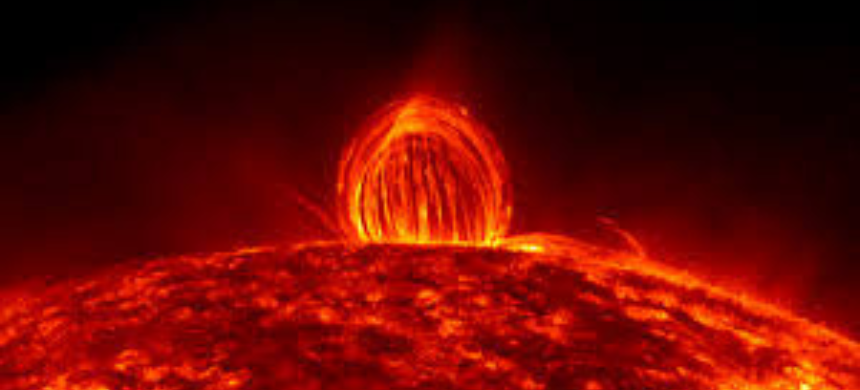For the first time, scientists have captured detailed images of “raindrops” on the Sun — cool streams of plasma falling back toward the solar surface — using a ground-based telescope in California.
These vividly colored images reveal large plasma arches and delicate stream-like structures, providing the most detailed view yet of the Sun’s outer atmosphere, known as the corona.
Coronal rain occurs when superheated plasma in the corona cools, condenses, and falls back along magnetic field lines toward the Sun’s surface. These streams, along with solar prominences—large looping arcs of plasma—are among the intricate structures observed in the new study.
The visuals, recorded in hydrogen-alpha light and colorized in artificial pink hues, were captured using time-lapse imaging technology that compensates for distortions caused by Earth’s turbulent atmosphere. The research was conducted by scientists from the U.S. National Science Foundation’s National Solar Observatory and the New Jersey Institute of Technology (NJIT), with findings published in Nature.
“These are the most detailed observations to date, showing features we’ve never seen before — and some that we still don’t fully understand,” said Vasyl Yurchyshyn, research professor at NJIT and co-author of the study.
Read More: https://theneutral.pk/top-5-countries-uae-residents-can-visit-visa-free-during-eid-al-adha-holidays/
The images were taken by the 1.6-meter Goode Solar Telescope at the Big Bear Solar Observatory (BBSO) in California, equipped with an advanced adaptive optics system named Cona. This system uses a laser to correct distortions in Earth’s upper atmosphere in real time.
“Cona is like a supercharged autofocus for the sky,” explained Nicolas Gorceix, chief observer at BBSO. The system reshapes a specialized mirror 2,200 times per second, dramatically improving image resolution. Previously, solar features smaller than 1,000 kilometers were difficult to detect from the ground, but with Cona, scientists can now observe structures as small as 63 kilometers.
The Sun’s corona, Latin for “crown,” is one of the most mysterious parts of the solar system. Normally hidden by the brightness of the Sun’s surface (the photosphere), the corona is visible only during total solar eclipses. Despite being less dense, it is several hundred thousand degrees hotter than the surface — a longstanding puzzle in solar physics.
The corona is especially important because it is the origin of the solar wind, a continuous stream of charged particles. When the solar wind interacts with Earth’s magnetic field, it can trigger geomagnetic storms and produce auroras.
Following successful tests at BBSO, the Cona system is now being installed at the Daniel K. Inouye Solar Telescope in Maui, Hawaii. With a 4-meter aperture, it is the world’s largest solar telescope and promises even deeper insights into the Sun’s complex outer layers.











